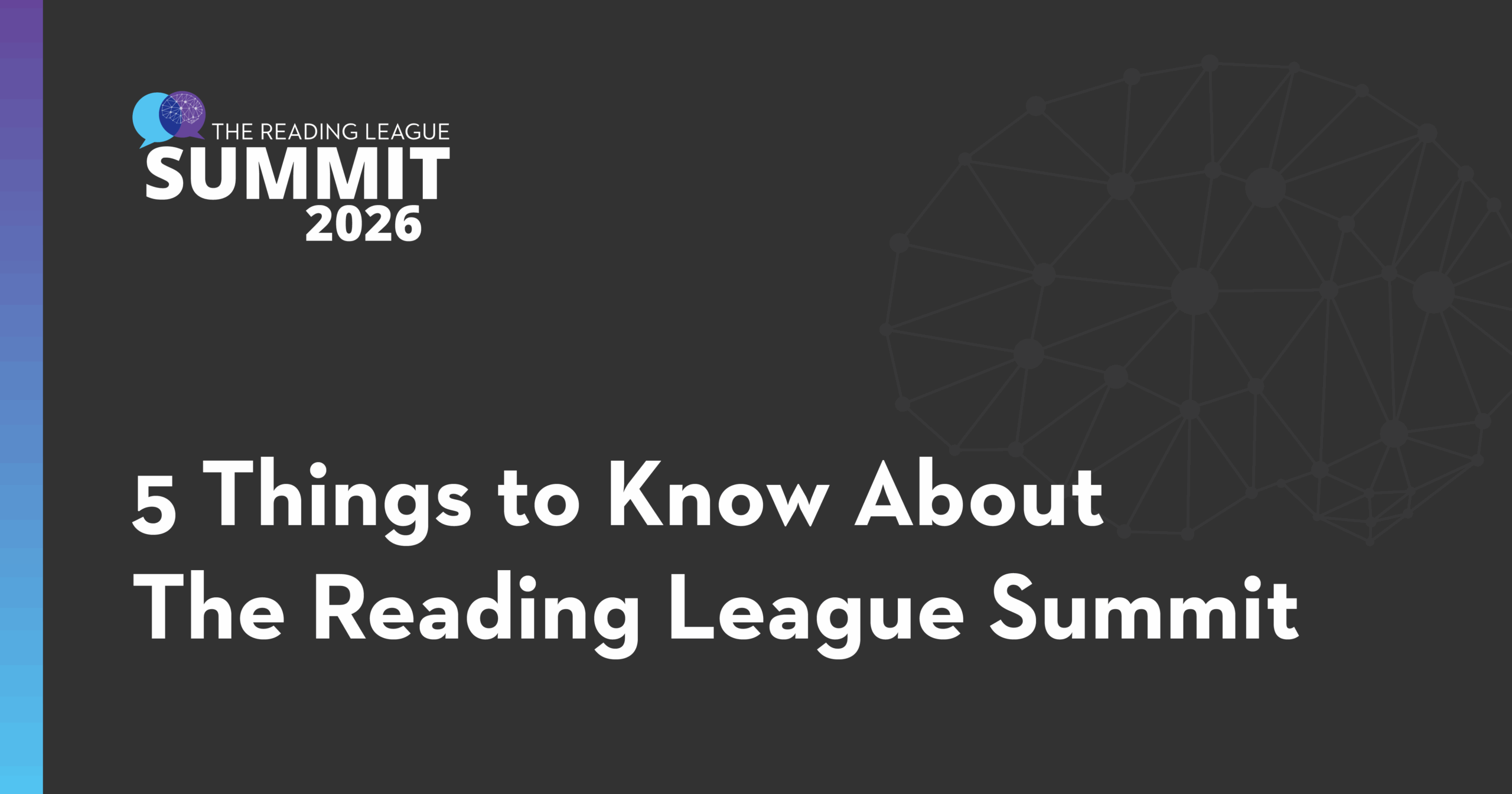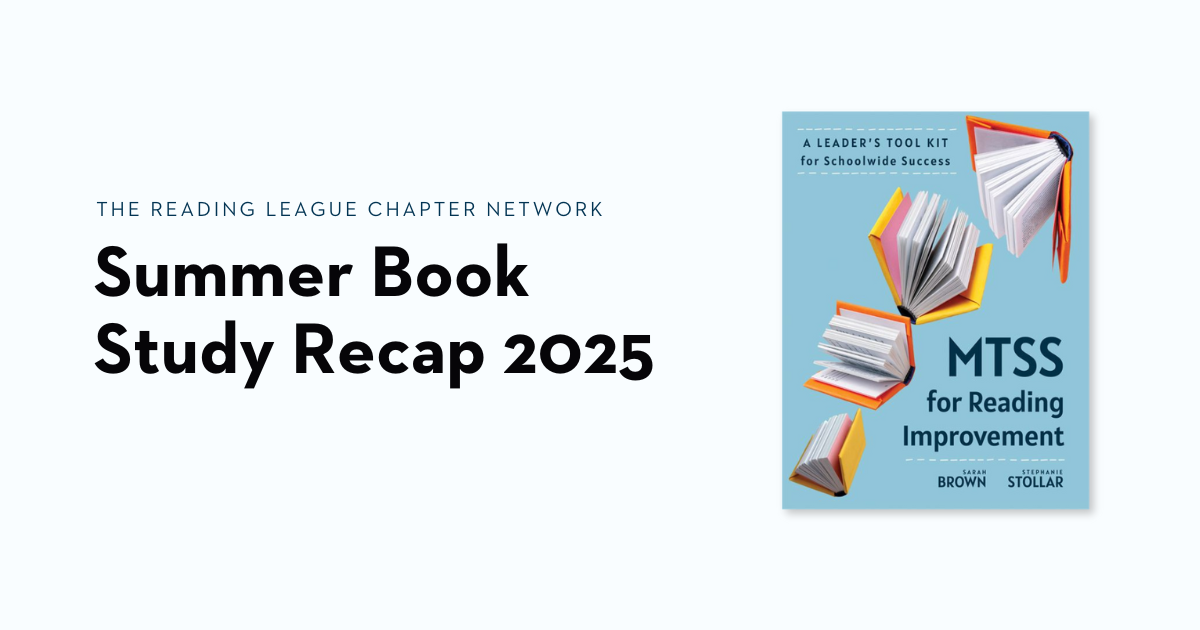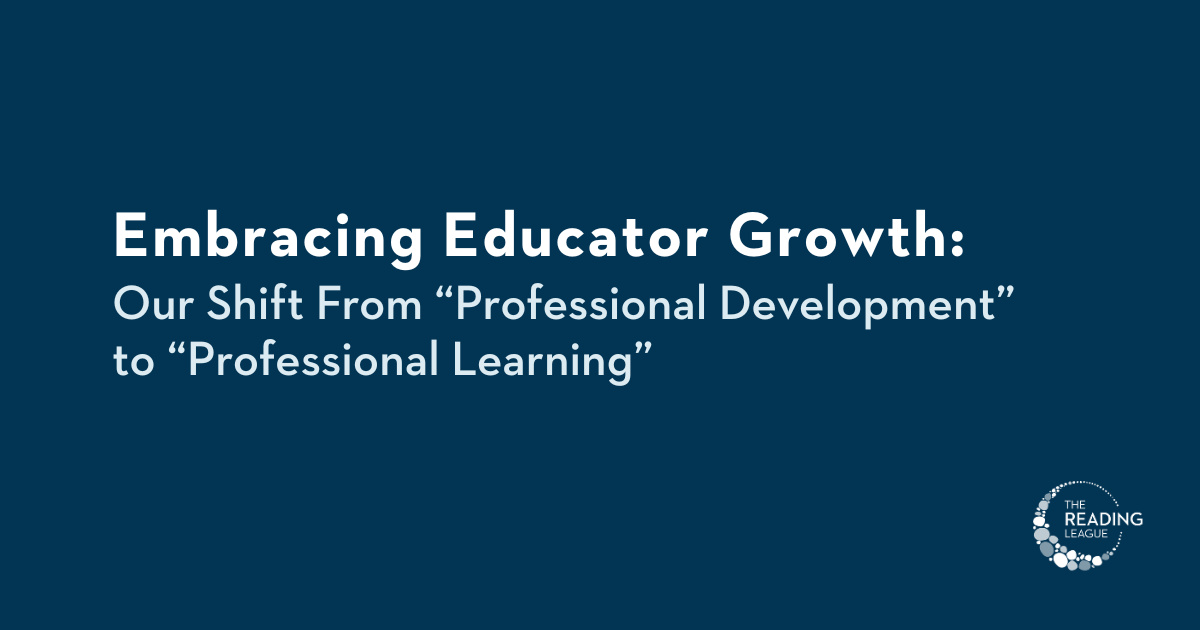By Ryan Buggy and Kari Kurto, The Reading League
On April 21–22, The Reading League (TRL) held its third annual Summit in Chicago, Illinois. Unlike traditional conferences where participants choose from a variety of sessions, the Summit offers a shared learning experience. All attendees gather in one room to hear expert panels engage in dialogue—often for the first time—on complex and sometimes contentious topics in literacy.
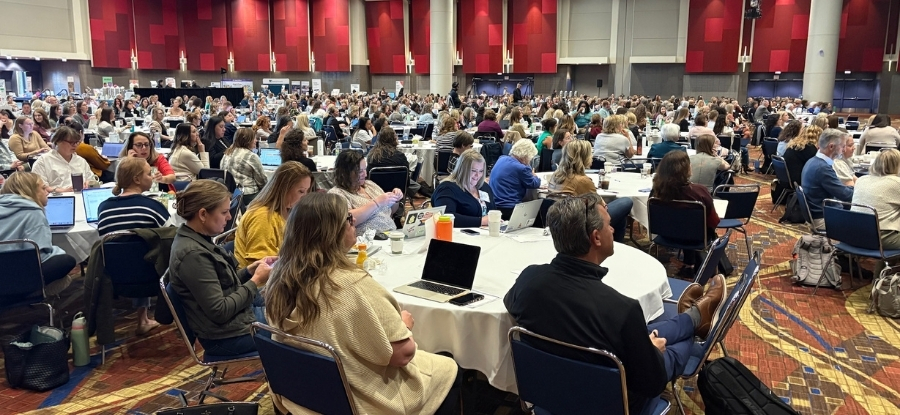
Attendees at The Reading League Summit in Chicago, Illinois
Previous Summits focused on meeting the literacy needs of emergent bilingual students. These events emerged from ongoing conversations between TRL, the National Committee for Effective Literacy (NCEL), and other collaborators. Initially marked by skepticism and public misunderstandings, TRL facilitated virtual meetings between these groups to build trust through respectful dialogue. These efforts resulted in two successful Summits and the co-creation of the TRL–NCEL Joint Statement, available alongside Summit recordings on the English learner/emergent bilinguals (EL/EB) and Science of Reading Compass page.
In planning the 2025 Summit, TRL broadened the focus beyond EL/EB instruction to address widely debated topics gaining traction on social media and within science of reading discussions. Using the Simple View of Reading (SVR) as a framework, the Summit’s structure encouraged deeper exploration as a foundation for examining areas of consensus, ongoing inquiry, and productive debate. Panels focused on word recognition, language comprehension, and reading comprehension, each illustrating how research findings can coexist with scientific uncertainty and dialogue.
To ensure a rich exchange of ideas, TRL invited leading experts—both those aligned and those with divergent perspectives. Some speakers expressed hesitation, referencing past disagreements or interactions. Recognizing the value of diverse viewpoints and wanting to be sure the panelists and moderators were well prepared to present productive conversations to the participants of the Summit, TRL’s Dr. Maria Murray and Kari Kurto facilitated pre-event panel meetings.
Beginning in November 2024, these virtual meetings proved energizing and constructive. As with the earlier NCEL dialogues, panelists found unexpected areas of agreement and mutual respect. Discussions often extended beyond scheduled calls through detailed email exchanges and collaborative review of presentation materials. This process fostered trust and collegiality throughout the winter months.
For instance, Drs. Wes Hoover and Nell Duke, previously viewed as holding contrasting positions, came to a shared understanding: the SVR is a validated model describing key related factors in reading comprehension, while the Active View of Reading encompasses broader influences on the reading process. Similarly, members of the language comprehension panel—Dr. Tiffany Hogan, Peter Bowers, Dr. Teresa Krastel, Dr. Julie Van Dyke, and Dr. Adelaida Restrepo—discovered common ground in their passion for language and discussed opportunities for future collaboration.
These pre-Summit dialogues evoked a spirit reminiscent of scholarly discourse before the rise of social media—curious, respectful, and committed to advancing scientific understanding through meaningful engagement.
This collaborative spirit spilled over to the planning and execution of the keynote speech, which was only crafted after the content of the panels was more deeply understood. The Reading League often refers to the slogan “It Takes a League.” We continue to invite keynote speakers with diverse perspectives to discuss the hard work of aligning educational practices with the scientific evidence of how children learn to read, but this year we chose to highlight the internal strength of our own league of experts who support the work at TRL National: Dr. Maria Murray, Kari Kurto, Andrea Setmeyer, Ryan Buggy, Katie Sojewicz, and Jessica Pasik.
Keynote Recap
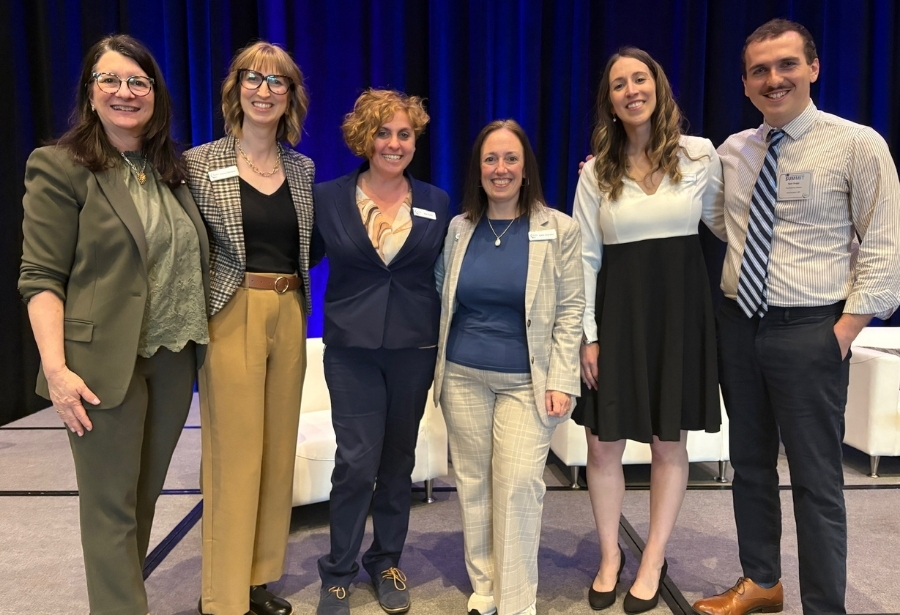
Summit keynote speakers (left to right): Dr. Maria Murray, Andrea Setmeyer, Kari Kurto, Katie Sojewicz, Jessica Pasik, and Ryan Buggy
To kick off the keynote, Kari Kurto shared some of the behind-the-scenes work involved in putting together these panels of experts. She also spoke about the importance of productive debate in moving the field forward. Dr. Maria Murray began the “collaborative keynote” by highlighting moments in the history of the science of reading, when reading scientists gathered at conferences to settle debates in the field and plan future research. Katie Sojewicz then highlighted several prominent misconceptions about the science of reading that she has seen from her lens as the vice president of professional development. Similarly, Jessica Pasik, a professional development director, talked about the shift from what to teach to how to teach, explaining that while many teachers are more knowledgeable about reading development itself, many districts are still working to implement these findings alongside robust multi-tiered systems of support. Ryan Buggy compared the field of education to that of medicine, highlighting the tension between educators’ need for immediate solutions and the slower, more deliberate pace of science. Finally, Andrea Setmeyer used a Goldilocks analogy to caution against both understating and overstating research findings and led the audience through an exercise about how to translate the evidence base “just right.”
Panel 1 – The Simple View of Reading as a Starting Point for Understanding Reading Development in All Learners: Consensus and Critique

Panel 1 (left to right): Jose Viana, Wes Hoover, Nell Duke, Richard Sparks, and Kathy Escamilla.
The first panel, moderated by José Vianna, brought together experts who gave an overview of the Simple View of Reading (Gough & Tunmer, 1986), as well as other models that seek to explain different aspects of reading instruction. Dr. Wesley Hoover pointed out that the SVR is about the “cognitive capacities that have to be mastered” in order to read. He discussed the decades of empirical research on the SVR across multiple languages, which demonstrate its utility in predicting students’ performance and creating useful profiles to describe students’ instructional needs. Dr. Nell Duke introduced frameworks like the Active View of Reading (Duke & Cartwright, 2021), which go beyond the cognitive capacities of the SVR by including additional influences on reading comprehension, such as motivation and executive functioning. Next, Dr. Richard Sparks highlighted some of his research on using the SVR to explain different patterns of word recognition and language comprehension growth among students learning a foreign language, noting that some students are initially more successful in decoding than they are in listening comprehension tasks. Finally, Dr. Kathy Escamilla talked about how the SVR can apply to multilingual learners, who draw on their strengths in another language when developing language and literacy skills in English. Escamilla also reminded us about the importance of other social factors that affect education, particularly for English learners: “We can’t talk about the cognitive without talking about the affective.”
Panel 2 – Language Comprehension: Consensus and Critique
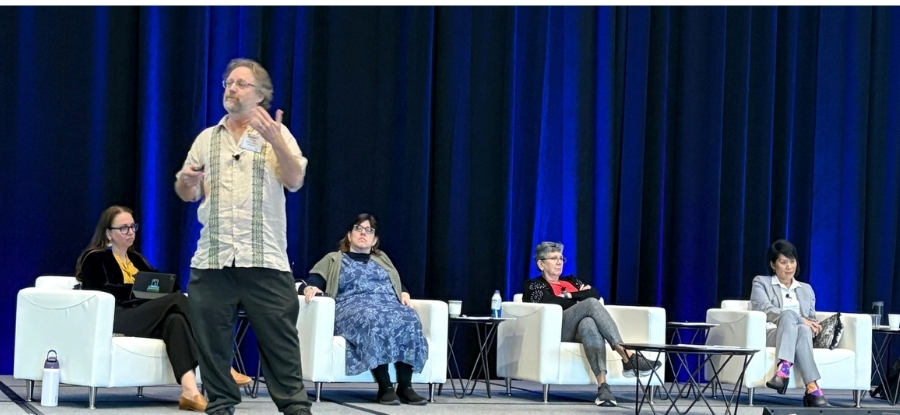
Panel 2 (left to right): Tiffany Hogan, Peter Bowers, Julie Van Dyke, Laida Restrepo, and Teresa Krastel.
The next panel, moderated by Dr. Tiffany Hogan, focused on language comprehension. Dr. Julie Van Dyke, an eye movement researcher, linked basic experimental findings about syntactic parsing (understanding sentence structure) to potential applications in the classroom. She highlighted the need for students to listen to above-grade-level text (e.g., during read-alouds) to help develop their language skills and expose them to more complex linguistic structures. Dr. Laida Restrepo shared her research about how different linguistic factors, such as vocabulary, discourse, and grammar, evolve over time in the context of multilingual learners. Later, Dr. Teresa Krastel brought the audience through an engaging experience in which we tried to read a passage and answer comprehension questions in a language that (most of us) didn’t know, shining light on the experience of many English learners in typical English-speaking classrooms. Finally, Dr. Peter Bowers discussed how explicit morphology instruction bridges word recognition and language comprehension by helping readers focus on meaningful parts of words, supporting later implicit learning.
Panel 3 – Word Recognition: Consensus and Critique

Panel 3 (left to right): Louisa Moats, David Kilpatrick, Susan Brady, Ramona Pittman, and Linnea Ehri.
The third panel was led by Dr. Louisa Moats, who spoke with experts on word recognition. Dr. Linnea Ehri began the discussion, providing an overview of key findings from her decades-long career. She built the foundation for the topic of word recognition by discussing the role of orthographic mapping, “a visual map to the phonemes in the word.” She explained how it allows readers to store words in memory for instant, automatic retrieval. Dr. David Kilpatrick spoke about the roles of automaticity in both letter-sound knowledge and phoneme awareness that readers require for orthographic mapping. He shared that phoneme proficiency refers to automaticity with phoneme awareness and acknowledged that additional research is needed to clarify its role in reading difficulties among older readers. Dr. Susan Brady cautioned the audience about phonemic awareness instruction that treats the manipulation of larger units of sound (e.g., syllables, onset-rime divisions) as a stepping stone to phoneme-level awareness. She shared research demonstrating that teaching syllable awareness first did not make phoneme-level learning go any faster, suggesting that early word reading instruction should begin with phonemic awareness itself rather than other phonological units. Finally, Dr. Ramona Pittman spoke about research involving speakers of African American English. She noted the importance of teacher knowledge of this rich, rule-governed linguistic variation; for example, teachers who are knowledgeable in African American English can better support students in connecting their oral language to spelling and can ensure that they are scoring assessments accurately in order to better understand their students’ strengths.
Panel 4 – Reading Comprehension: Consensus and Critique
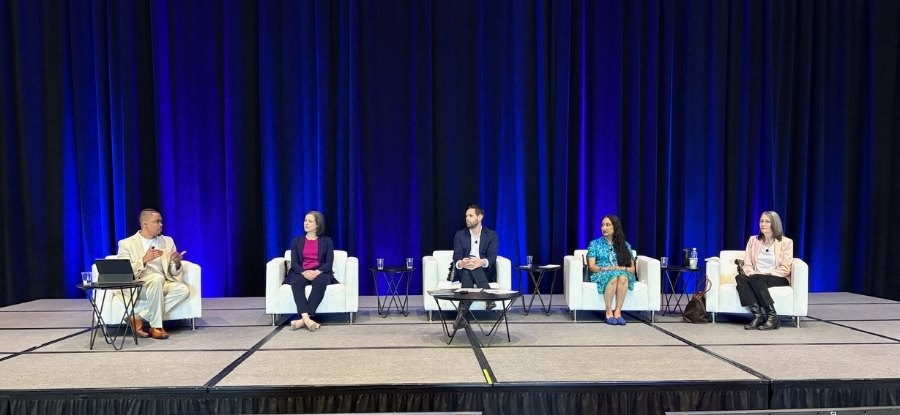
Panel 4 (left to right): Mitchell Brookins, Adrea Truckenmiller, Reid Smith, Kay Wijekumar, and Leslie Laud
The last panel tackled reading comprehension and was facilitated by Dr. Mitchell Brookins, a national board member for The Reading League. The first panelist to speak was Dr. Adrea Truckenmiller, who discussed the role of connectives in sentence-level comprehension instruction and assessment (e.g., “because,” “however”). She stressed the importance of both educational leaders and researchers attending to implementation science to scale up practices that have shown promising results through research. Dr. Reid Smith talked about the role of background knowledge in reading comprehension. He mentioned that students with relevant prior knowledge are often able to better comprehend the text they read, yet warned that background knowledge alone is insufficient to compensate for differences in reading ability. Dr. Kay Wijekumar explained that “gist is the foundational unit of comprehension” and that evidence-based comprehension routines, such as her Knowledge Acquisition and Transformation (KAT) framework, have produced exceptional results in helping students better understand text. Dr. Wijekumar detailed how to help students by using her KAT framework in an article for the May/June 2023 issue of The Reading League Journal. Finally, Dr. Leslie Laud explained the differences between “knowledge building” curricula and “content-rich literacy instruction,” emphasizing that students need both knowledge and reading strategies to comprehend complex texts.
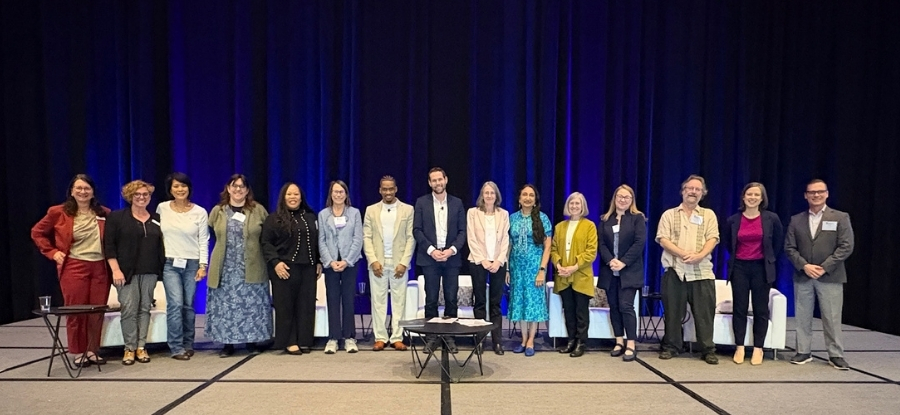
From left to right: Maria Murray, Kari Kurto, Teresa Krastel, Julie Van Dyke, Ramona Pittman, Louisa Moats, Mitchell Brookins, Reid Smith, Leslie Laud, Kay Wijekumar, Susan Brady, Nell Duke, Peter Bowers, Adrea Truckenmiller, and Jose Viana.
As the event came to a close, attendees reflected on key takeaways and reaffirmed their shared commitment to advancing literacy through evidence-aligned practices. The spirit of collaboration and curiosity was palpable, fueling a collective momentum that will carry us forward as a league. We’re already looking ahead to Summit 2026 and can’t wait to continue this journey with you. Make sure you’re subscribed to our newsletter to be the first to hear the upcoming theme and dates. Until then, thank you for being part of this transformative experience, and we’ll see you in 2026!
Summit 2025: Insight, Impact, and What’s Next
